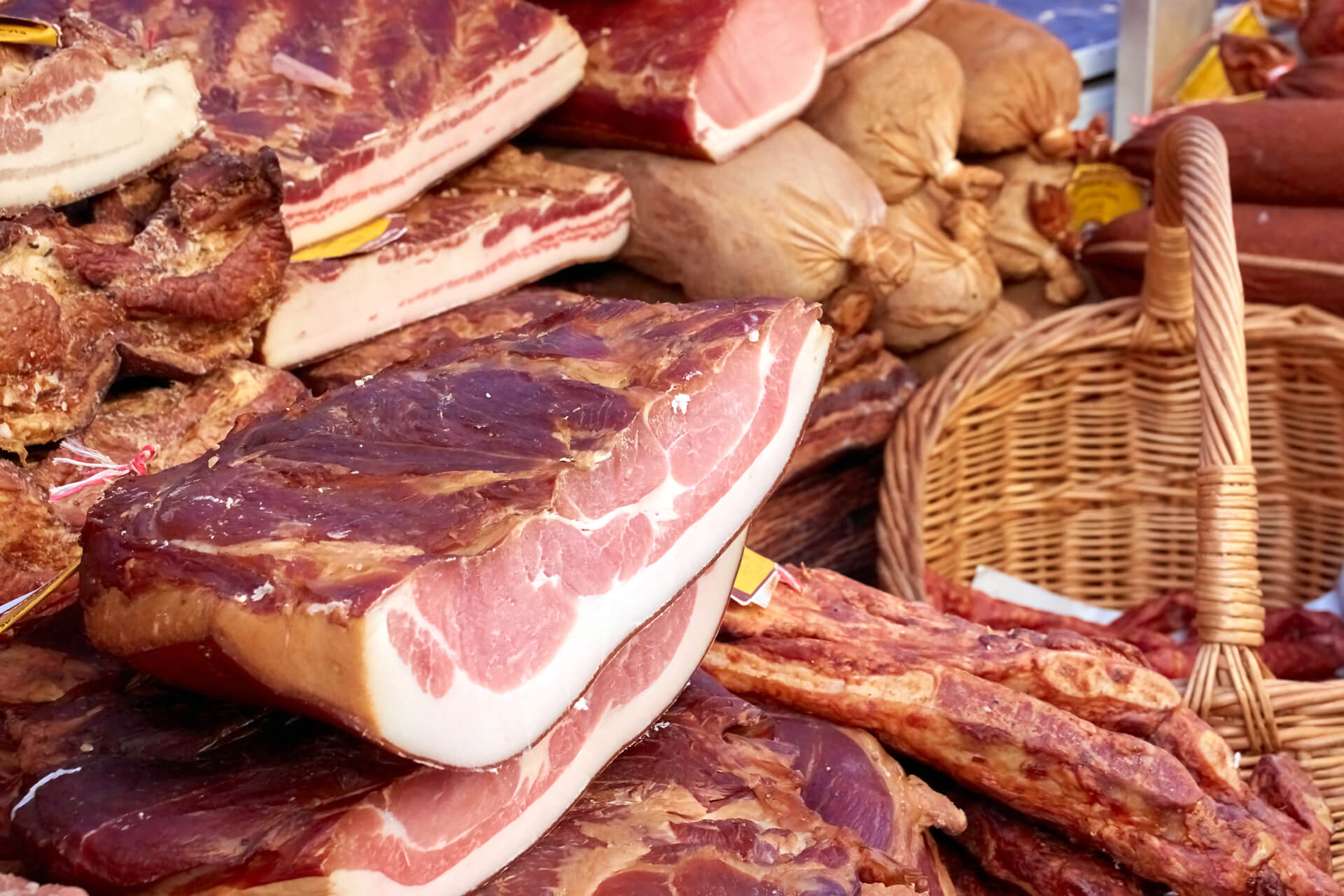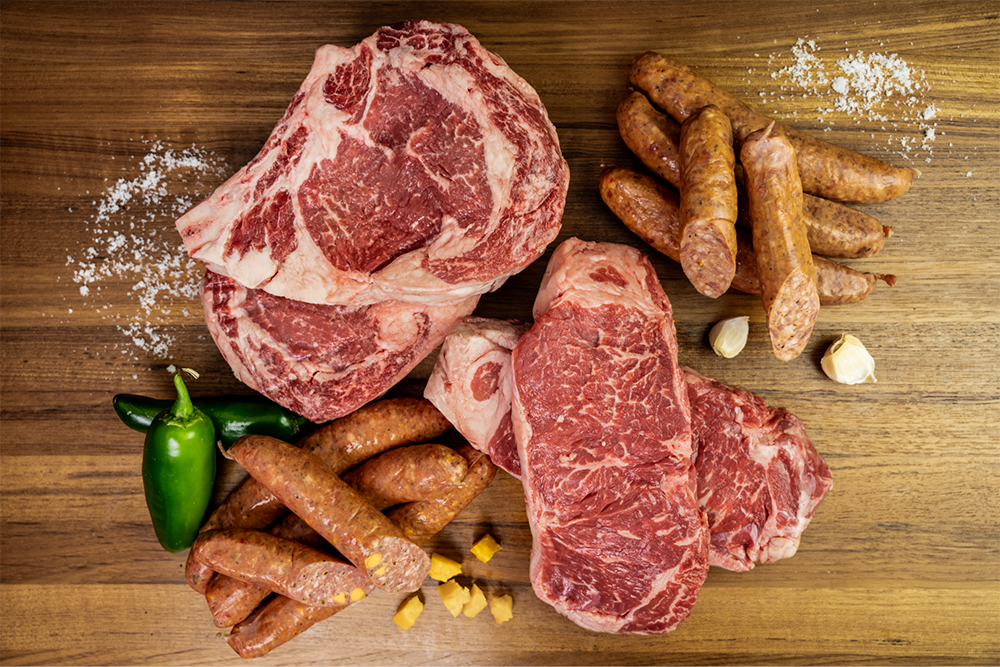Discover Fresh Cuts at Bagley Farms Meat Market Edwardsville IL for Your Following barbeque
Discover Fresh Cuts at Bagley Farms Meat Market Edwardsville IL for Your Following barbeque
Blog Article
Reveal the Art of the Butcher's Cut in a Modern Meat Market
In the ever-evolving landscape of modern meat markets, the butcher's cut has actually transcended its typical origins, combining olden craftsmanship with modern techniques. bagley farms meat market edwardsville il. Today's butchers are not just cpus of meat; they are experienced artisans who stress sustainability and moral sourcing. Their expertise in selecting and preparing cuts customized to certain culinary needs supplies an unrivaled dining experience. Yet, what absolutely sets the contemporary butcher apart is their ability to build a deeper connection in between consumers and the beginnings of their meat. Exactly how do these masters balance practice with advancement, and what implications does this have for the future of meat intake?
Evolution of Butchery Strategies

The mid-20th century saw butchery strategies better improved by scientific insights into muscular tissue biology and meat aging, boosting both inflammation and taste. Developments like vacuum product packaging and refrigeration expanded item shelf-life, enabling butchers to diversify offerings and enhance quality control. This period additionally noted the increase of specialized tools, such as band saws and meat slicers, which boosted precision and effectiveness in meat processing.
Digital systems now help in tracking pet provenance and optimizing cuts to fulfill particular consumer preferences. In addition, a renewal in artisanal butchery has arised, blending conventional abilities with contemporary knowledge to provide to consumers looking for ethical and lasting meat options.

Understanding Meat Cuts

Comprehending the ins and outs of meat cuts is crucial for both butchers and consumers looking for high quality and value. Each cut comes from a various component of the animal, passing on unique tastes, appearances, and food preparation techniques. Mastery of these distinctions not just enhances cooking experiences yet likewise optimizes the utility of each carcass. For butchers, precise cuts mirror ability and respect for the craft, guaranteeing very little waste and optimum yield.
The primary classifications of meat cuts include primitive, sub-primal, and retail cuts. Primal cuts, such as the loin, rib, and chuck, are the huge sections originally separated from the carcass. Butchers after that break these down better into sub-primal cuts, prior to lastly generating retail cuts offered to customers, like ribeye or tenderloin. Each stage calls for careful focus to anatomical framework and muscular tissue structure.
Recognizing muscle structure is essential; muscle mass used much more regularly by the animal have a tendency to be harder and are best matched for slow cooking approaches, while less-used muscular tissues, like those found in the loin, are a lot more tender and perfect for grilling or roasting. Experience with these differences encourages consumers to make informed options, boosting their cooking endeavors.
Picking Top Quality Meat
Picking the right meat involves more than just picking a visually appealing piece from the display. The art of picking top quality meat requires a discerning eye and knowledge of particular characteristics that symbolize freshness and excellence. Pay attention to the color; beef needs to have an intense, cherry-red color, while lamb must display a soft pink tone, and pork a pale pink. This indicates the meat is fresh and hasn't been revealed to oxygen for also long.
Second of all, consider the marbling, which describes the white flecks of fat within the muscular tissue. Appropriate marbling is an essential indication of tenderness and taste, as it melts throughout cooking, enhancing the meat's juiciness. Keep in mind, continue reading this higher marbling often associates with superior quality cuts, such as USDA Prime.
Texture is an additional vital factor; meat needs to feel strong to the touch, not slimy or extremely soft. Additionally, bear in mind the scent. Fresh meat must have a clean, neutral smell, totally free from any kind of sour or off-putting odors.
Pairing Cuts With Food Preparation Methods
Successfully pairing cuts of meat with the suitable food preparation approaches is essential for achieving optimal flavor and structure. These techniques improve the meat's all-natural tastes and make certain a juicy coating.
Conversely, tougher cuts like brisket and chuck roast are abundant in collagen, which damages down right into jelly when prepared gradually. These cuts are excellent for braising or slow-moving roasting, permitting the meat to soften with time and create deep, intricate tastes. Cuts such as brief ribs and pork shoulder make out well with slow-cooking approaches, where expanded cooking times change their robust textures into delicious recipes.
Lamb shanks and oxtail, which call for extended cooking to tenderize, are perfect prospects for cooking or sluggish simmering. These methods find coax out rich, passionate tastes while preserving wetness. By comprehending the distinct qualities of each cut, chefs and home chefs alike can raise their culinary creations, ensuring each recipe is both pleasing and memorable.
The Butcher's Duty Today
Browsing the developing landscape of the modern meat market, the butcher's duty today prolongs past simple preparation of cuts. Contemporary butchers are cooking artisans, educators, and supporters for sustainable techniques. They bridge the void between the ranch and the fork by making sure ethical sourcing, recognizing animal husbandry, and focusing on transparency in the supply chain. This change shows the growing consumer demand for quality over quantity, where provenance and pet well-being are critical.
In addition to crafting accurate cuts, butchers currently engage straight with consumers, providing cooking suggestions and tailoring choices to match private demands and preferences. Their expertise in meat aging, marbling, and flavor accounts encourages consumers to make educated choices, enhancing their culinary experiences. This individualized solution exemplifies the butcher's progressing duty as Discover More a trusted consultant in the cooking area.
Moreover, butchers are essential in decreasing waste, utilizing entire pets to create diverse items such as sausages and stocks - bagley farms meat market edwardsville il. This extensive technique not just respects the animal however additionally straightens with contemporary sustainability objectives. By doing this, the modern-day butcher symbolizes both custom and advancement, adjusting to an ever-changing market while maintaining the virtuosity and integrity of their craft

Final Thought
Proficiency in understanding varied meat cuts and quality signs encourages butchers to offer informed suggestions, straightening particular cuts with optimum cooking approaches. By recognizing historical methods while welcoming contemporary needs, the butcher's duty remains important in today's innovative meat market.
Report this page